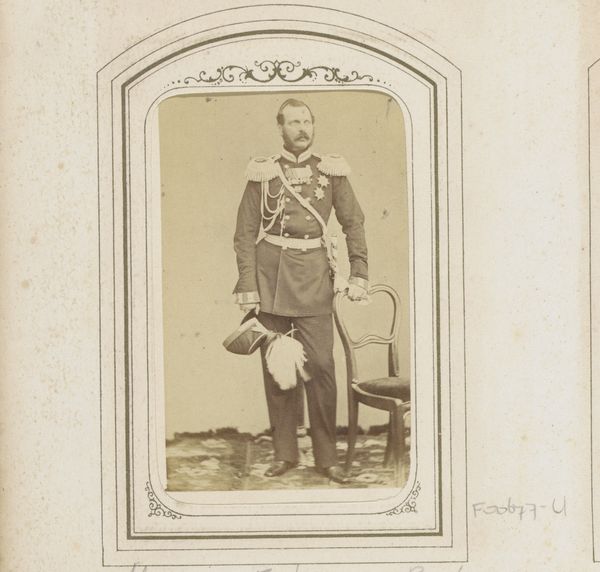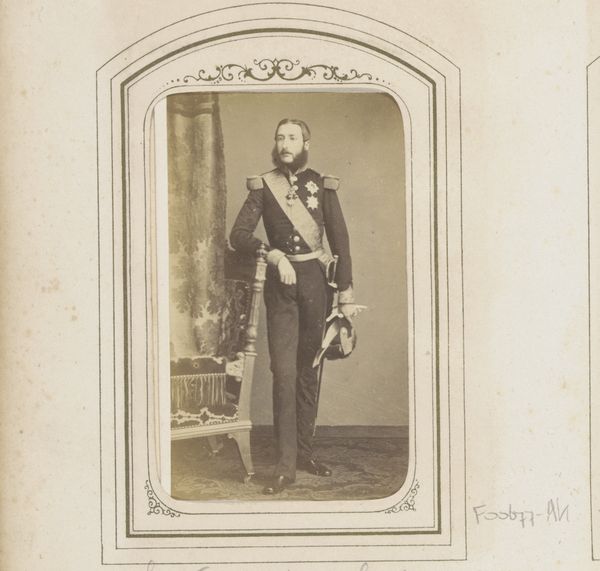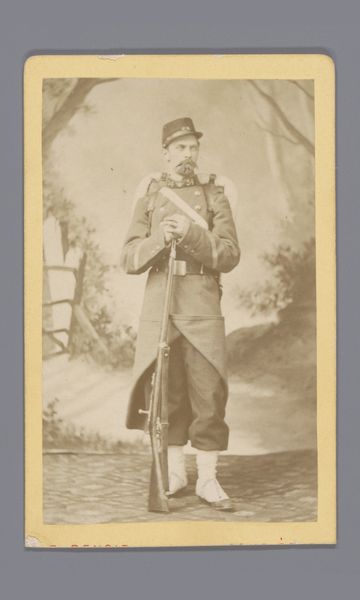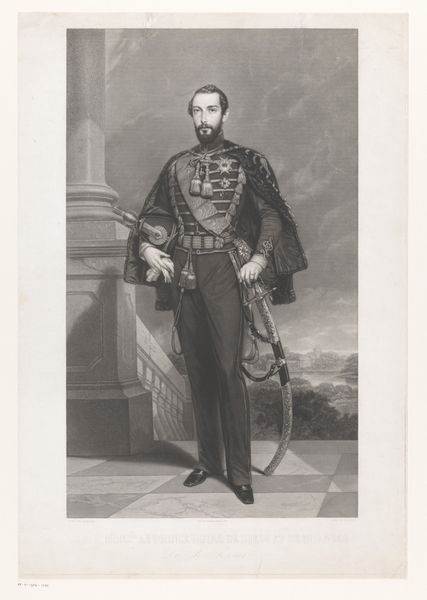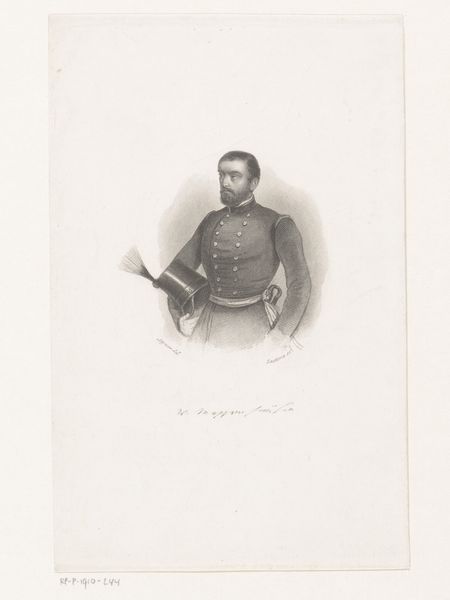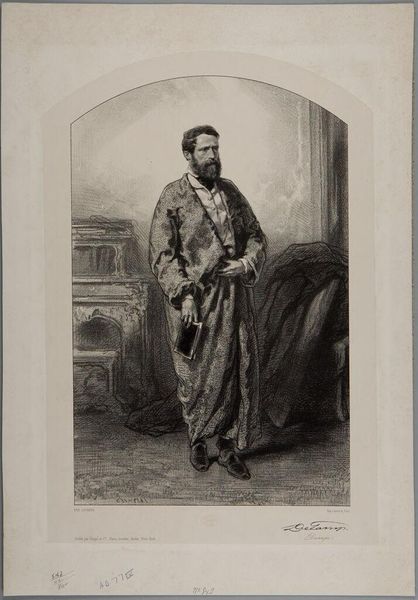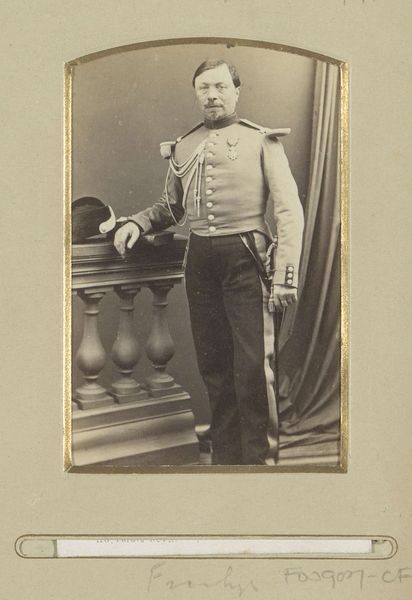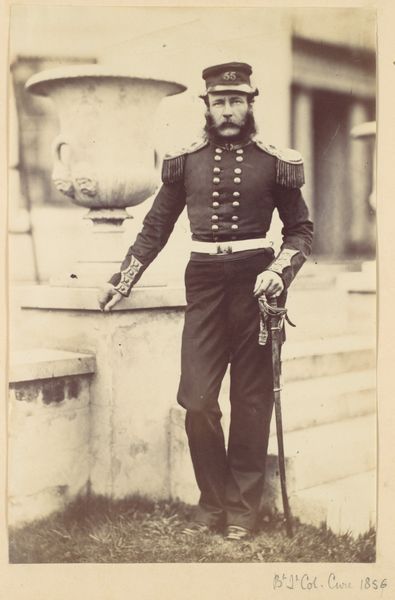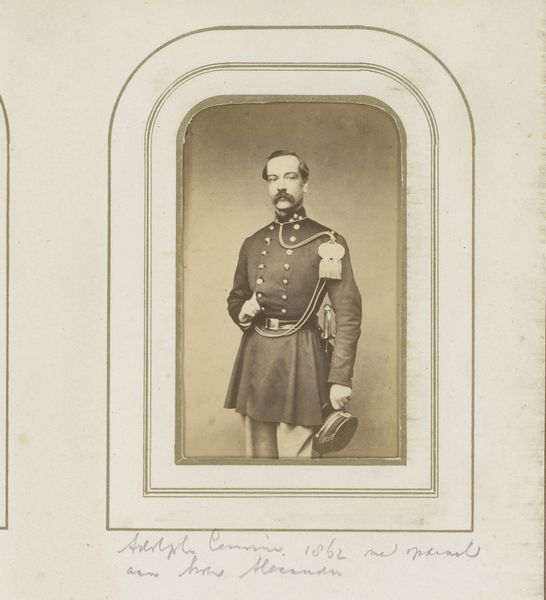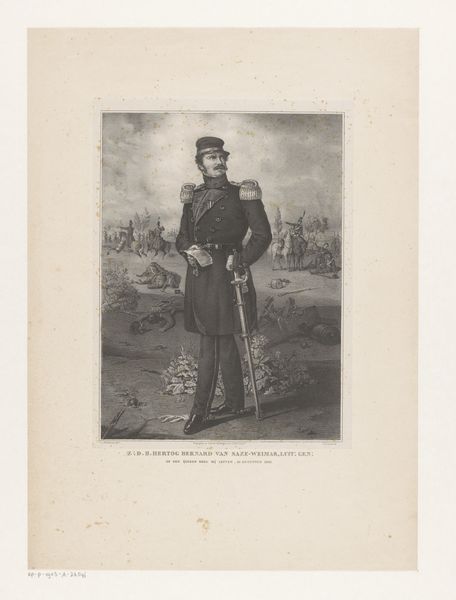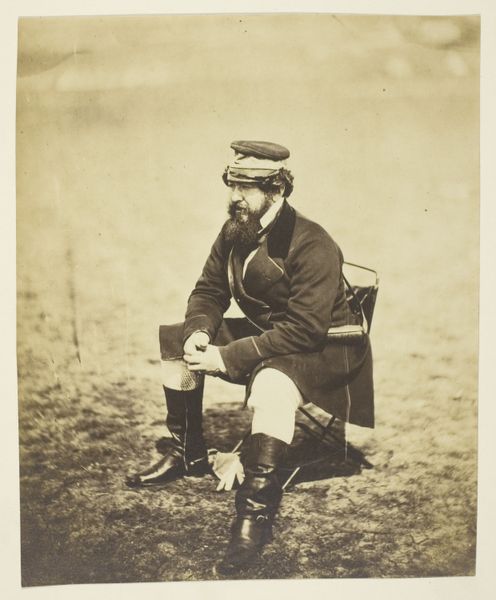
drawing, graphite
#
portrait
#
drawing
#
graphite
#
history-painting
#
academic-art
#
realism
Dimensions: height 720 mm, width 507 mm
Copyright: Rijks Museum: Open Domain
This is Joseph Schubert’s portrait of Joseph Christiaans, made as a lithograph. The lithographic process involves drawing with a greasy crayon on a stone, which is then treated with chemicals so that ink adheres only to the drawn areas. The resulting prints have a distinctive soft, almost smoky quality, which you can see clearly here. In this case, the technique captures all the details of Christiaans’s military regalia. The epaulettes, medals, and braiding, rendered with meticulous care. Lithography was a relatively new technology at the time, an ingenious blend of chemistry and craft. It allowed for the relatively quick production of images, making art more accessible and playing a crucial role in the rise of mass media. The widespread availability of printed images like this one changed the landscape of visual culture. It democratized portraiture, and in turn, it helped to shape how people saw themselves and the world around them.
Comments
No comments
Be the first to comment and join the conversation on the ultimate creative platform.
